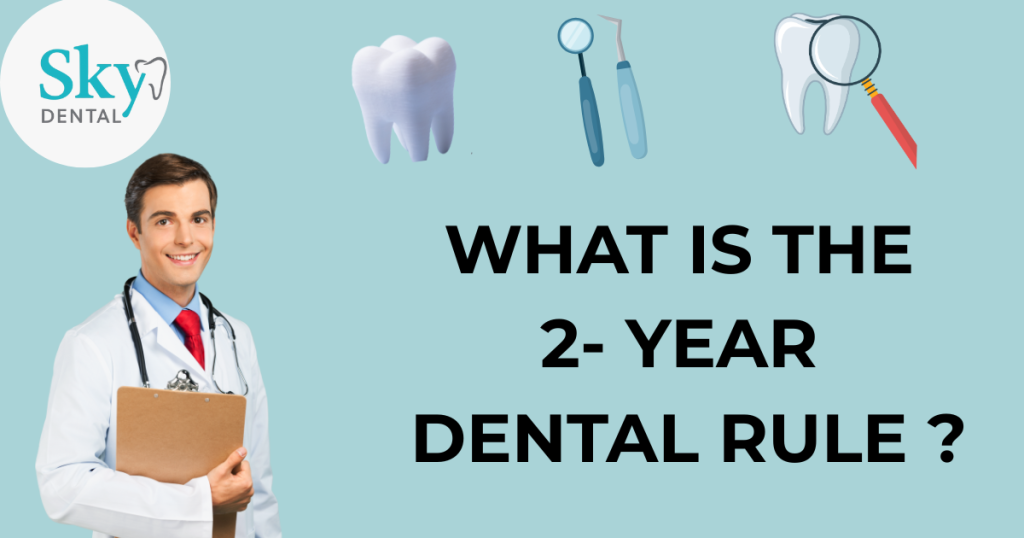Introduction :
The 2-Year Dental Rule assists dentists to ensure proper keeping of record of patients and oral changes through time. It helps identify dental issues at an early stage and plan their treatment with updated data, providing patients with a more reasonable control of their oral condition.
Understanding the 2-Year Dental Rule :
The 2-year dental rule is a suggested procedure to refresh the dental X-rays, oral tests, and medical history after every two years. This will make sure that dentists access the latest information about the teeth, gums, and overall oral health of a patient. As oral conditions may vary because of diet, hygiene, lifestyle habits, or may occur with natural aging, a regular update of these records after every two years will keep the records accurate and reliable to aid in diagnosis and treatment.
Importance of Updating Dental X-Rays :
The dental X-rays are important in identifying secretive dental issues that cannot be observed by conducting a standard visual examination. The 2-Year Rule has guaranteed that the dentists receive a renewed perspective of teeth, roots, and jaw structure. New X-rays are useful in detecting early cavities, root infections, affected teeth, loss of bone density and gum disease. Early detection of these problems will enable the dentists to offer effective treatment in a timely and cost-effective manner to ensure that small problems do not become huge problems.
Role of Updating Medical and Dental Histories :
The 2-Year Dental Rule also lays emphasis on the need to update medical and dental histories. Health conditions of a patient are subject to change over a period, such as new medication, chronic conditions or lifestyle change. These conditions may have direct impact on the kind of dental treatment necessary. Dentists can conduct safer and more personalized care by reviewing medical information after every two years. This assists in the prevention of complications at the time of procedures and also makes sure that the treatment plans reflect the current health conditions of the patient.
Benefits of Following the 2-Year Rule :
There are several stages in the 2-Year Dental Rule. Recent dental records assist the dentists with making correct diagnoses and eliminates the possibility of overlooking latent problems. It also results in great cost savings since by the time of early diagnosis much smaller issues can be addressed before they get worse. Periodic renewal enhances the oral health of the long term and contributing towards preventive dentistry by eliminating problems at an early stage. Also, new records enable dentists to design individual treatments plans to take into consideration the current needs and condition of the mouth.
Who Should Follow This Rule Strictly?
Though the 2-Year Rule favours everyone, some people are required to adhere to it more. There is rapid growth of teeth and jaw in children and teenagers. Close monitoring is necessary to patients who have gum disease or have a history of frequent cavities. Individuals who are undergoing orthodontics as well as those with persistent health problems should also keep up with their dental records. These populations are the most beneficiary of regular follow-ups, ensuring the oral and general health is stable.
Conclusion :
The 2-Year Dental Rule is a fundamental policy which keeps dental records, X-rays, and medical histories safe, current, and viable. Regularly revising such records after every two years, dentists will be able to see the problems at an early stage, deliver individualized care, and avoid serious dental complications. Adherence to this rule benefits the long-term oral health and improves the quality of the dental treatment. The 2-Year Dental Rule is an easy, but useful tool to a patient and dental professional to keep their smile healthy.


